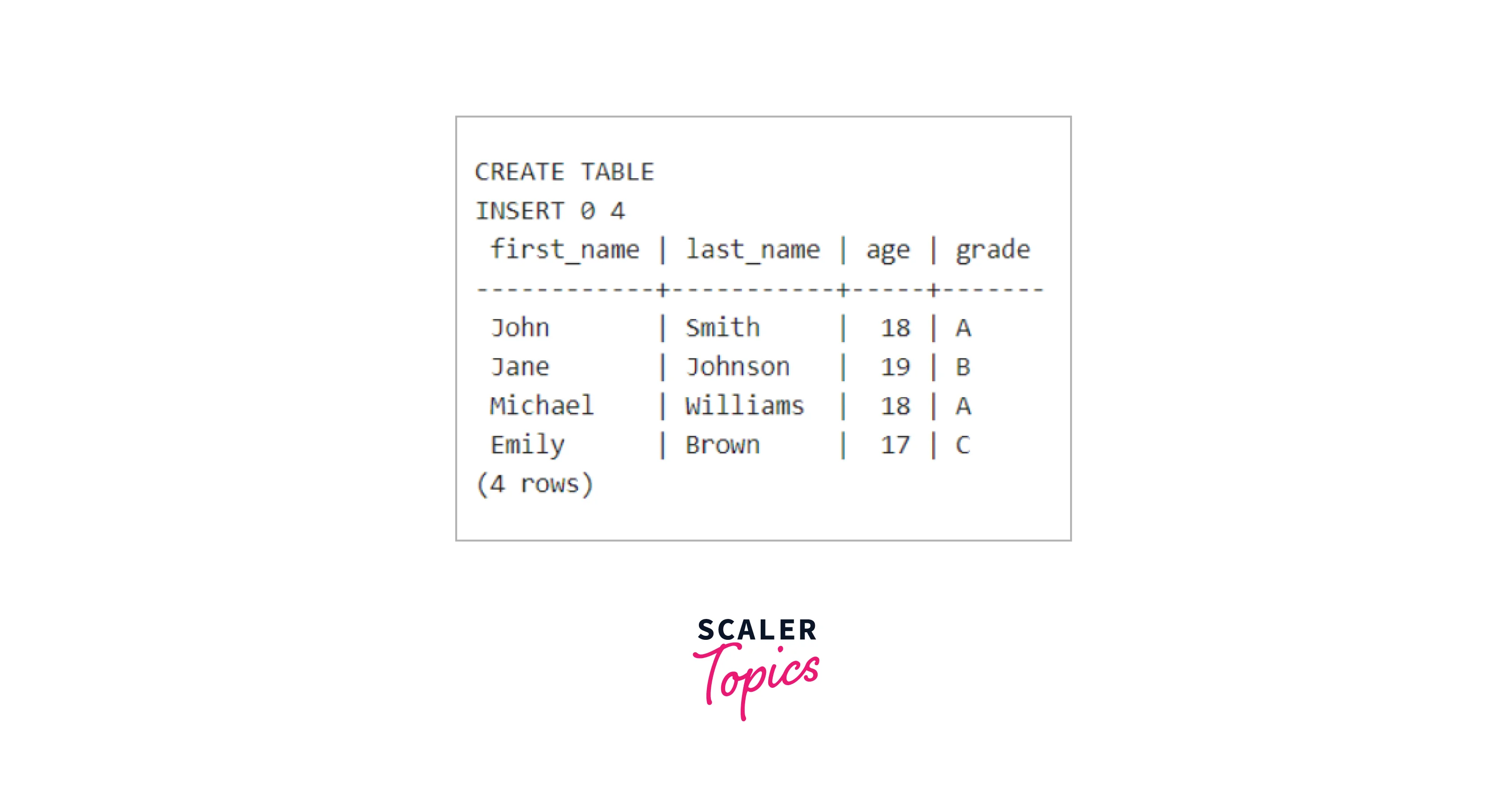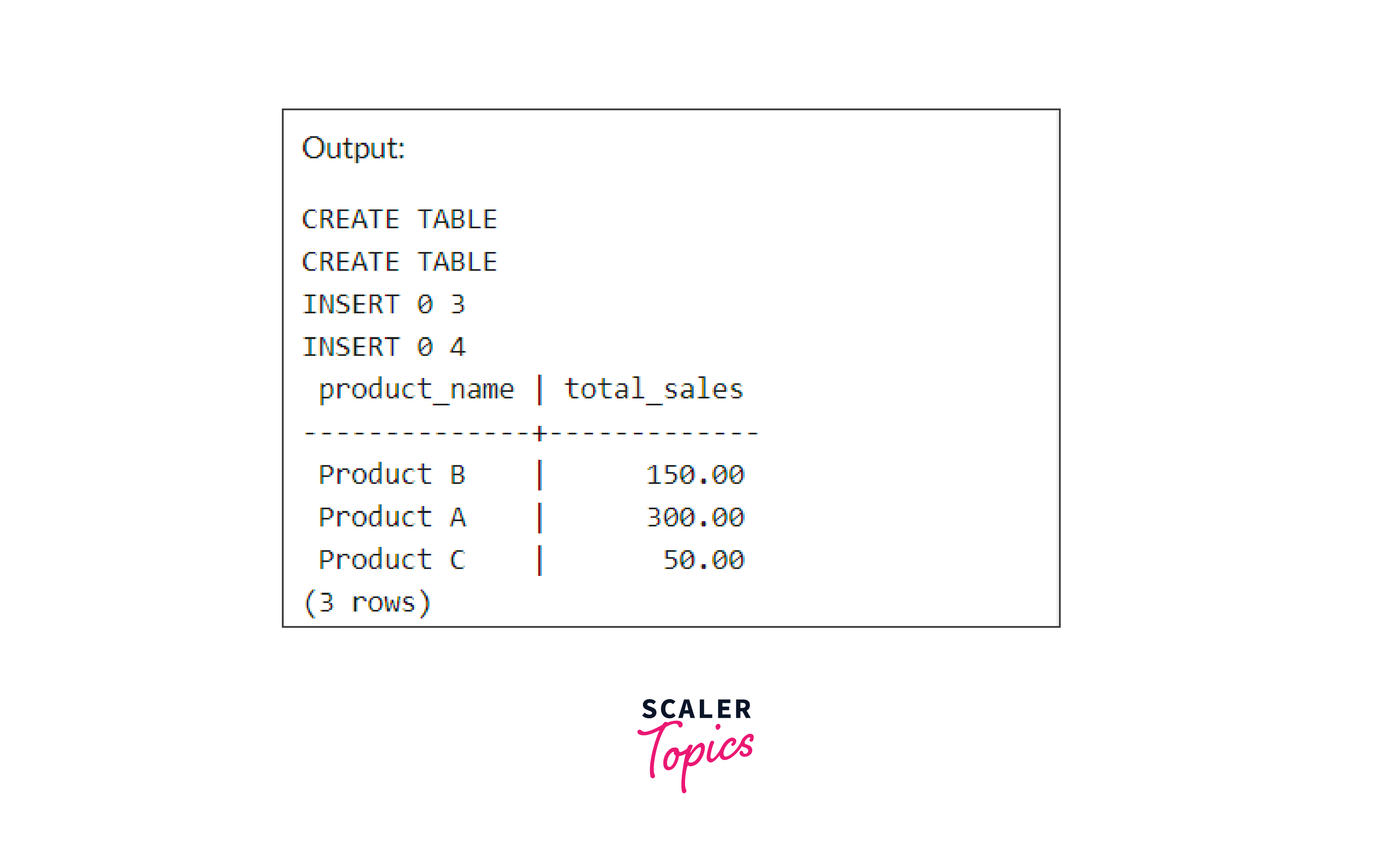FROM Clause in PostgreSQL
Introduction
PostgreSQL stands as one of the most powerful and feature-rich relational database management systems in the world. Its robustness and flexibility are complemented by its adherence to the Structured Query Language (SQL). The SQL language forms the backbone of interactions with PostgreSQL databases, allowing users to retrieve, manipulate, and manage data effectively. At the core of SQL queries lies the essential FROM clause in PostgreSQL, a fundamental element that plays a pivotal role in shaping query results.
Understanding the FROM Clause in PostgreSQL
The FROM clause is a fundamental construct within SQL, including PostgreSQL. It's used primarily in SELECT statements to specify the tables or relations from which data should be retrieved. The FROM clause introduces the data sources that will be used in conjunction with other query elements to produce the desired results.
Basic Syntax
The basic syntax of the FROM clause is as follows:
Here, table_name represents the specific table from which you want to retrieve data, and column1, column2, etc. refer to the columns within that table.
Role of the FROM Clause in a Query
The FROM clause serves as the foundation upon which queries are built. It dictates the source of data for your query and defines the context within which other query components operate. This clause enables combining data from multiple tables, a feature crucial for constructing complex queries involving various data relationships.
Usage of the FROM Clause
Let's delve into two important ways this clause is used: single table querying and using aliases.
Single Table Querying
One of the simplest ways to utilize the FROM clause is in a single table query. In this scenario, you're extracting information from just one table. Consider a scenario where you have a table named students that stores information about different students in a school. You can use the FROM clause to retrieve specific columns from this table:
Example:
Output:

Using Aliases with the FROM Clause
When working with more than one table, the FROM clause becomes even more powerful. This is where aliases come to the rescue.
An alias is a short, temporary name given to a table (or a column). It simplifies query writing and enhances readability. Let's say we have two tables: orders and customers. Instead of typing out these table names repeatedly, we can use aliases:
Example:
Output:

The FROM clause integrates these aliases, indicating which tables you're selecting data from and how they are connected in the JOIN operation.
JOIN Operations with the FROM Clause
The FROM clause in PostgreSQL isn't just about querying data from a single table; it shines even brighter when you're dealing with multiple tables and need to combine information from them. This is where JOIN operations come into play. Let's explore how the FROM clause facilitates these operations, the various types of JOINs available, and how to use them effectively.
Introduction to JOINs
JOIN operations are essential when you want to connect data from two or more tables based on common fields. Imagine you have two tables: employees and departments. The employees table contains information about staff members, including their department IDs, while the departments table holds details about different departments. You might want to retrieve data that includes employee names alongside their respective department names.
Different Types of JOINs in PostgreSQL
PostgreSQL offers several types of JOINs, each serving a different purpose:
- INNER JOIN: Retrieves rows that have matching values in both tables being joined.
- LEFT JOIN: Fetches all rows from the left (or first) table and matching rows from the right (or second) table.
- RIGHT JOIN: Similar to the LEFT JOIN, but it fetches all rows from the right table and matching rows from the left table.
- FULL OUTER JOIN: Retrieves all rows from both tables and matches them where possible.
Using the FROM Clause in JOIN Operations
The FROM clause plays a central role in performing JOIN operations. It allows you to specify multiple tables and their relationships, creating a unified dataset. Let's look at an example using the employees and departments tables:
Example:
Output:

In this query, the FROM clause combines the employees and departments tables using an INNER JOIN. The ON clause establishes the connection between these tables by matching the department_id values.
Advanced Usage of the FROM Clause
While the FROM clause in PostgreSQL is powerful on its own, its capabilities extend further when you venture into advanced techniques. Let's explore two such techniques: subqueries in the FROM clause and combining multiple FROM clauses.
Subqueries in the FROM Clause
A subquery is a query nested within another query. It can be used within the FROM clause to provide a dynamic data source for your main query. This can be incredibly useful when you need to manipulate or filter data before incorporating it into your primary query.
Consider a scenario where you want to find the average salary of employees in each department, but only for departments where the average salary is above a certain threshold:
Example:
Output:

Combining Multiple FROM Clauses
While a standard query typically involves a single FROM clause, PostgreSQL allows you to use multiple FROM clauses with the AND or OR operators. This technique can be handy when you need to work with complex conditions or multiple data sources.
Assume we have two tables: employees and departments, and we want to retrieve a list of employees who work in the 'IT' department and have a certain job title. Here's how you can achieve this using multiple FROM clauses with the AND operator:
Example:
Output:

Common Mistakes and How to Avoid Them
Let's explore some of these errors and discover best practices to sidestep them.
Discussion of Common Errors While Using the FROM Clause
- Incorrect Table or Column Names: A frequent mistake involves misspelling table or column names in the FROM clause. This leads to syntax errors or unexpected query results.
- Missing Aliases: When working with multiple tables, failing to use aliases in the FROM clause can lead to ambiguity and errors, especially when columns have similar names across tables.
- Improper JOIN Conditions: Incorrect join conditions specified in the FROM clause can result in wrong or incomplete data retrieval. It's crucial to ensure that the join conditions accurately represent the relationship between tables.
Best Practices to Avoid Errors
- Double-Check Table and Column Names: Before executing a query, verify that you've spelled table and column names correctly in the FROM clause. Typos are a common source of errors.
- Consistent Alias Usage: When dealing with multiple tables, always use aliases in the FROM clause to clarify which table you're referencing. Make sure to use these aliases consistently throughout your query.
- Verify JOIN Conditions: Pay close attention to join conditions in the FROM clause. Ensure that the columns you're joining on have matching data types and that the condition accurately reflects the relationship between the tables.
- Debug Incrementally: If you encounter issues, break down your query and test individual components. This approach can help pinpoint errors in the FROM clause and other parts of the query.
- Documentation and Comments: Document your queries with comments explaining the intent of each component, including the FROM clause. This can be immensely helpful when reviewing or troubleshooting queries later.
Performance Implications of the FROM Clause
Let's explore how the FROM clause can influence query execution speed and efficiency, and discover some valuable tips for optimizing queries that involve it.
Understanding How the FROM Clause Can Affect Query Performance
The FROM clause plays a crucial role in determining the size of the result set by specifying data sources and join conditions. A poorly designed FROM clause can lead to suboptimal performance for several reasons:
- Unnecessary Data Retrieval: Including unnecessary tables in the FROM clause can result in fetching more data than required, leading to slower query execution.
- Inefficient JOINs: Incorrectly structured join conditions in the FROM clause can cause PostgreSQL to perform resource-intensive operations, resulting in slow queries.
- Lack of Index Utilization: If the tables involved in the FROM clause are not properly indexed, the database engine might struggle to locate and join data efficiently.
Tips for Optimizing Queries Using the FROM Clause
- Selective Column Retrieval: Instead of selecting all columns using *, specify only the columns you need in the SELECT clause. This reduces the data transferred and boosts query speed.
- Use Joins Wisely: Opt for the appropriate type of join (INNER, LEFT, RIGHT, FULL OUTER) based on your data relationship. This ensures that only relevant data is retrieved.
- Indexing: Ensure that the columns used in the join conditions of the FROM clause are properly indexed. Indexes accelerate data retrieval and JOIN operations.
- Subqueries with Caution: While subqueries in the FROM clause can be powerful, they might impact performance. Test and evaluate their efficiency before deploying them in production queries.
- Analyze and Explain: Use PostgreSQL's EXPLAIN statement to analyze query execution plans. This helps you understand how the FROM clause and other query components influence performance.
Example of Optimization:
Let's say you have a scenario where you need to retrieve a list of products along with their total sales amounts. Instead of using a subquery in the FROM clause, which could impact performance, you can use a JOIN with an aggregate function:
Output:

In this example, the FROM clause combines the products and sales tables using a JOIN. The query uses the GROUP BY clause to aggregate sales by product, resulting in a more optimized query.
Conclusion
- The FROM clause in PostgreSQL lays the groundwork for query execution, defining data sources and enabling advanced operations.
- Leveraging the FROM clause in JOIN operations empowers seamless data integration and unlocks insights from interconnected tables.
- Subqueries within the FROM clause and multiple FROM clauses enable intricate data manipulations and integrations.
- By following best practices, developers can sidestep common mistakes in syntax, aliases, and JOIN conditions, ensuring accurate results.
- Optimizing queries involving the FROM clause through careful column selection, indexing, and JOIN strategies enhances overall database performance.
